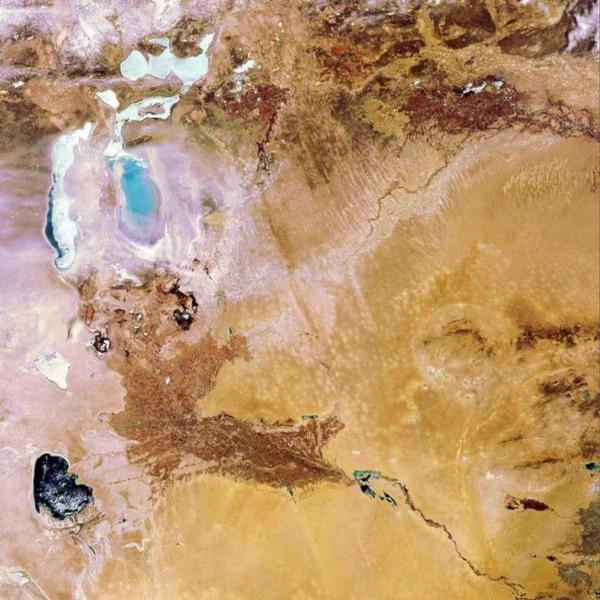
The Aral Sea is located in Central Asia, straddling two countries, Kazakhstan and Uzbekistan. Once the fourth largest lake in the world with an area of 68,000 km², the Aral Sea has turned into a salt desert in less than 50 years. Its disappearance is mainly due to the diversion of the Amu Darya and Syr Darya rivers for agricultural irrigation during the Soviet era, leading to a dramatic reduction in freshwater inflow.
The gradual withdrawal of water has caused increased salinity, the disappearance of local fauna and flora, and the loss of fishing activities that supported riverside populations. The saline dust raised by the wind causes respiratory health problems and contaminates surrounding agricultural soils. The ecological and social consequences are therefore catastrophic, transforming a productive ecosystem into an arid desert.
Since the 2000s, several projects have attempted to partially restore the Aral Sea, notably the construction of the Kokaral Dam, which has allowed the reconstruction of the Small North Aral. Local interventions have improved water levels and biodiversity, but the south remains largely desert and full recovery of the former lake seems unrealistic.
| Year | Area (km²) | Volume (km³) | Remarks |
|---|---|---|---|
| 1960 | 68,000 | 1,100 | Initial state before diversions |
| 1970 | 60,000 | 1,000 | Start of massive irrigations |
| 1980 | 45,000 | 700 | Rapid water reduction |
| 1990 | 30,000 | 400 | Formation of the saline desert |
| 2000 | 17,000 | 100 | Start of restoration projects |
| 2020 | 15,000 | 80 | Small North Aral partially recovered |